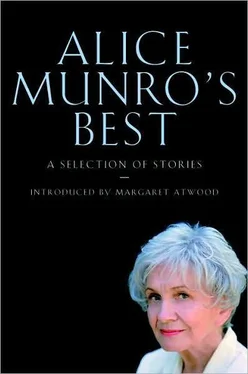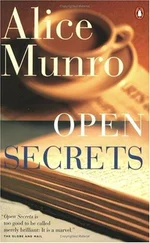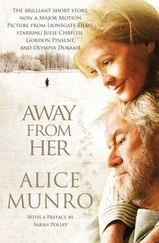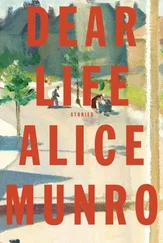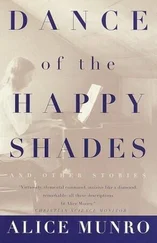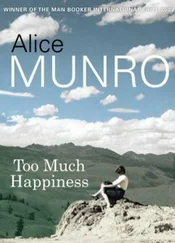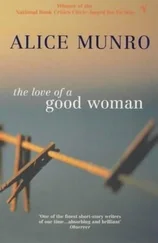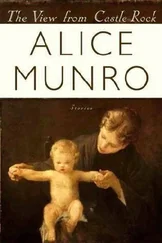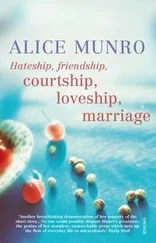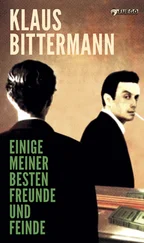At the same time her writer protagonists share this scorn of the artificial side of art, and the distrust of it. What should be written about? How should one write? How much of art is genuine, how much just a bag of cheap tricks—imitating people, manipulating their emotions, making faces? How can one affirm anything about another person—even a made-up person—without presumption? Above all, how should a story end? (Munro often provides one ending, then questions or revises it. Or else she simply distrusts it, as in the final paragraph of “Meneseteung” where the narrator says, “I may have got it wrong.”) Isn’t the very act of writing an act of arrogance, isn’t the pen a broken reed? A number of stories—“Friend of My Youth,” “Carried Away,” “Wilderness Station,” “Hateship, Friendship, Courtship, Loveship, Marriage”—contain letters that display the vanity or falsity or even the malice of their writers. If the writing of letters can be so devious, what about writing itself?
This tension has remained with her: as in “The Moons of Jupiter,” Munro’s artistic characters are punished for not succeeding, but they are punished also for success. The woman writer, thinking about her father, says:
I could hear him saying, Well, I didn’t see anything about you in Maclean’s. And if he had read something about me, he would say, Well, I didn’t think too much of that write-up. His tone would be humorous and indulgent but would produce in me a familiar dreariness of spirit. The message I got from him was simple: Fame must be striven for, then apologized for. Getting or not getting it, you will be to blame.
*
“Dreariness of spirit” is one of the great Munro enemies. Her characters do battle with it in every way they can, fighting against stifling mores and other people’s deadening expectations and imposed rules of behaviour, and every possible kind of muffling and spiritual smothering. Given a choice between being a person who does good works but has inauthentic feelings and is numb at heart and one who behaves badly but is true to what she really feels and is thus alive to herself, a Munro woman is likely to choose the latter; or, if she chooses the former, she will then comment on her own slipperiness, guile, wiliness, slyness, and perversity. Honesty, in Munro’s work, is not the best policy: it is not a policy at all, but an essential element, like air. The characters must get hold of at least some of it, by fair means or foul, or—they feel—they will go under.
The battle for authenticity is waged most significantly in the field of sex. The Munro social world—like most societies in which silence and secrecy are the norm in sexual matters—carries a high erotic charge, and this charge extends like a neon penumbra around each character, illuminating landscapes, rooms, and objects. A rumpled bed says more, in the hands of Munro, than any graphic in-out, in-out depiction of genitalia ever could. Even if a story is not primarily about a love affair or sexual encounter, men and women are always aware of one another as men and women, positively or negatively, recognizing sexual attraction and curiosity or else sexual revulsion. Women are immediately attuned to the sexual power of other women, and are wary of it, or envious. Men show off and preen and flirt and seduce and compete.
Munro’s characters are as alert as dogs in a perfume store to the sexual chemistry in a gathering—the chemistry among others, as well as that of their own visceral responses. Falling in love, falling in lust, sneaking around on spouses and enjoying it, telling sexual lies, doing shameful things they feel compelled to do out of irresistible desire, making sexual calculations based on social desperation—few writers have explored such processes more thoroughly, and more ruthlessly. Pushing the sexual boundaries is distinctly thrilling for many a Munro woman; but in order to trespass you have to know exactly where the fence is, and Munro’s universe is criss-crossed with meticulously defined borders. Hands, chairs, glances—all are part of an intricate inner map strewn with barbed wire and booby traps, and secret paths through the shrubbery.
For women of Munro’s generation, sexual expression was a liberation and a way out. But out of what? Out of the denial and limiting scorn she describes so well in “The Turkey Season”:
Lily said she never let her husband come near her if he had been drinking. Marjorie said since the time she nearly died with a hemorrhage she never let her husband come near her, period. Lily said quickly that it was only when he’d been drinking that he tried anything. I could see that it was a matter of pride not to let your husband come near you, but I couldn’t quite believe that “come near” meant “have sex.”
For older women like Lily and Marjorie, to enjoy sex would have been a humiliating defeat. For women like Rose, in “The Beggar Maid,” it’s a matter for pride and celebration, a victory. For later generations of women—post Sexual Revolution—enjoying sex was to become simply a duty, the perfect orgasm yet another thing to add to the list of required accomplishments; and when enjoyment becomes a duty, we’re back in the land of “dreariness of spirit.” But for a Munro character in the throes of sexual exploration, the spirit may be confused and ashamed and tormented, even cruel and sadistic—some of the couples in her stories get pleasure out of torturing each other emotionally, just like some real people—but it is never dreary.
In some of the later stories, sex can be less impetuous, more calculated. For example, Grant, in “The Bear Came Over The Mountain,” uses it as the decisive element in an astonishing feat of emotional commodities-trading. His beloved wife Fiona has dementia, and has become attached to a similarly-afflicted man in her care facility. When this man is taken home by his hard-bitten, practical wife, Marian, Fiona pines and stops eating. Grant wants to persuade Marian to put her husband back in the institution, but Marian refuses: it would cost too much. However, Grant detects that Marian is lonely and sexually available. She has a wrinkled-up face, but her body is still attractive. Like an adroit salesman, Grant moves in to close the deal. Munro knows full well that sex can be a glory and a torment, but it can also be a bargaining chip.
* * *
The society Munro writes about is a Christian one. This Christianity is not often overt; it’s merely the general background. Flo in “The Beggar Maid” decorates the walls with “a number of admonitions, pious and cheerful and mildly bawdy:”
THE LORD IS MY SHEPHERD
BELIEVE IN THE LORD JESUS CHRIST AND THOU SHALT BE SAVED
Why did Flo have those, when she wasn’t even religious? They were what people had, common as calendars.
Christianity is “what people had”—and in Canada, church and state were never separated along the lines laid down in the United States. Prayers and Bible readings were daily fare in publicly funded schools. This cultural Christianity has provided ample material for Munro, but it is also connected with one of the most distinctive patterns in her image-making and storytelling.
The central Christian tenet is that two disparate and mutually exclusive elements—divinity and humanity—got jammed together in Christ, neither annihilating the other. The result was not a demi-god, or a God in disguise: God became totally a human being while remaining at the same time totally divine. To believe that Christ was only a man or to believe he was simply God were both declared heretical by the early Christian church. Christianity thus depends on a denial of either/or classifying logic and an acceptance of both-at-once mystery. Logic says that A cannot be both itself and non-A at the same time, Christianity says it can. The formulation “A but also non-A” is indispensable to it.
Читать дальше
